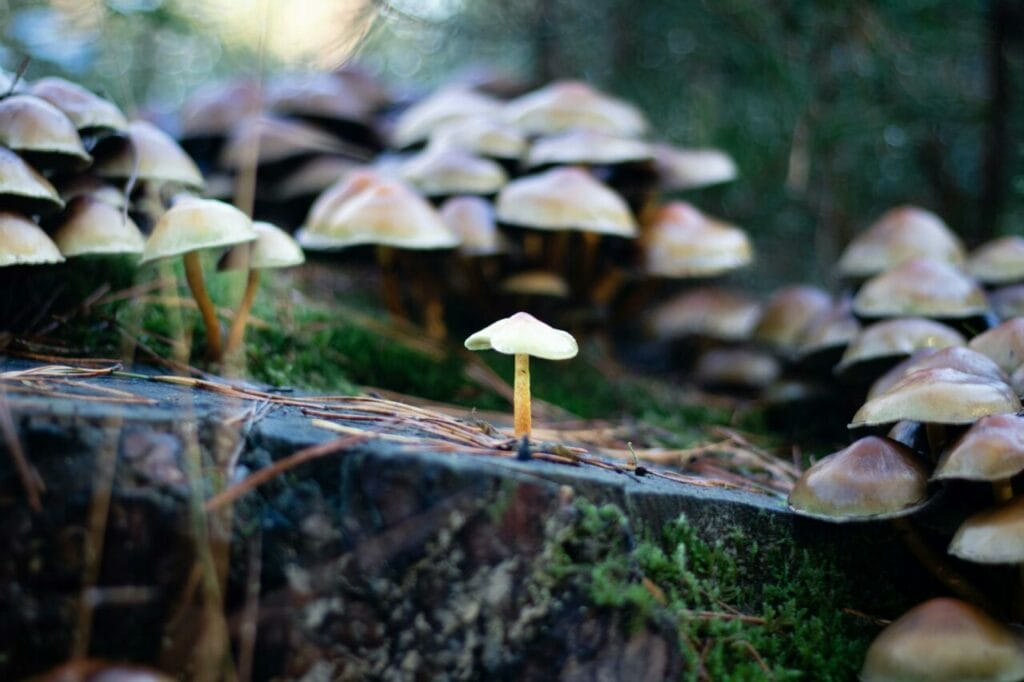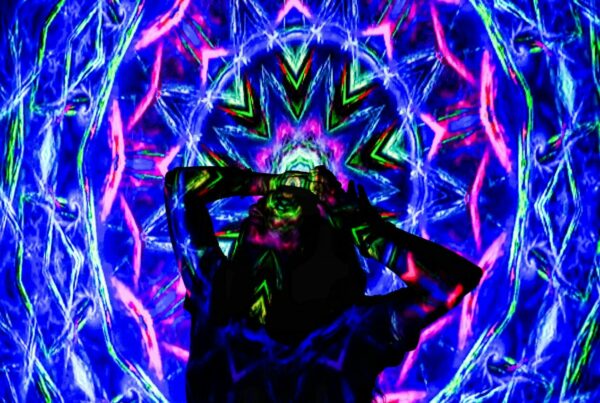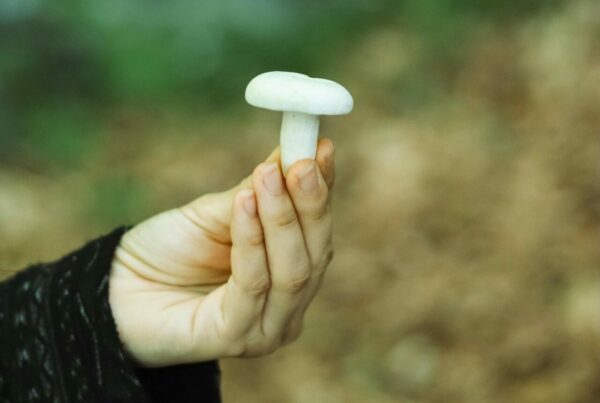Alzheimer’s Disease (AD) is a severe neurodegenerative condition with no known cure. Its increasing incidence presents a substantial hurdle. Researchers are investigating better treatment approaches by considering both natural and synthetic options.
Several clinical studies have highlighted the promising potential of serotonergic psychedelics such as LSD, DMT, and psilocybin, in treating Alzheimer’s disease. For additional captivating information, feel free to explore online materials or consider “purchasing psychedelics online in Canada.”
[toc]
The Contribution of Psychedelics to Alzheimer’s Treatment
Conventional psychedelics demonstrate promise in treating early-stage Alzheimer’s Disease (AD) or mild cognitive impairment (MCI) by stimulating the growth of brain cells.
Psychedelics might foster neural plasticity for learning and memory by targeting specific brain receptors. This could potentially slow or even reverse the neurodegenerative effects of AD. Furthermore, psychedelics could ease depression and anxiety, often linked with AD patients, by triggering positive psychological impacts.
Questions remain about how psychedelic treatments work. Some suggest that profound effects from high-dose psychedelics, such as mystical sensations or a sense of self-dissolution, are essential for reaping psychological benefits. Others argue that the key lies in the biological transformations initiated by these substances. Both viewpoints may be valid.
Conventional psychedelics appear to aid the brain in adapting and reducing inflammation, even at lower doses. Consequently, low-dose treatments might be beneficial for conditions like brain degeneration or migraines without significant mind-altering effects. However, for depression, anxiety, or addiction, the mind-altering effects seem pivotal, leading to introspection and behavioural changes. Therefore, both low and high doses deserve examination for personalized therapy.
The Impact of Serotonergic Psychedelics
Serotonergic psychedelics, including LSD (lysergic acid diethylamide), DMT (dimethyltryptamine), and psilocybin (found in magic mushrooms), are gaining
The potential therapeutic benefits of various mental health disorders have led to a growing interest in them.
Conditions are influenced in various ways.
In Alzheimer’s Disease (AD) research, serotonin receptors, renowned for their capacity to improve cognition and regulate neuroplasticity, are an encouraging field of focus, according to experts.
The primary way these substances exert their pharmacological effects is by modifying the brain’s serotonin system, resulting in alterations in perception, mood, and consciousness. Here are some research findings that reinforce this idea:
- In particular, the 5-HT2A subtype of receptors affects the gene expression of neuroplasticity-enhancing neurotrophins in brain areas impacted by AD.
- These receptors control cortical signalling, vital for cognition, memory, and synaptic plasticity.
- Despite their atypical distribution in neurons, serotonin receptors play a role in neural development, regeneration, and plasticity.
Significant Research Findings
- Evidence shows that serotonergic psychedelics could potentially alleviate aspects of AD pathology by promoting neuroplasticity.
- Traditional psychedelics influence neurotransmission, stimulate synaptic remodelling, and enhance factors contributing to neuronal survival.
- Particular psychedelics, such as muscimol and Sig-1R agonists, could potentially reduce the neurotoxicity associated with AD progression.
- Traditional psychedelics activate pathways in brain areas affected by AD, implying potential for slowing or reversing brain degeneration.
- Psilocybin mushrooms initiate neural plasticity, encouraging neurogenesis and causing lasting changes in brain circuits.
- Psychedelics strengthen brain connectivity by focusing on receptor genes and inducing changes in neurons and networks.
Clinical studies suggest that both traditional and non-traditional psychedelics from magic mushrooms affect numerous biological processes in the brain. These include swift changes in gene expression and significant alterations in brain structure and function.
These psychedelics interact with receptors like serotonin, sigma, NMDA, and GABA, leading to increased synaptic plasticity and brain rejuvenation. Hence, psychedelics could potentially exert positive effects on behaviour, memory, and cognition, positioning them as promising treatments for AD and related disorders.
Obtain Psychedelics Online in Canada
Considering the microdosing of magic mushrooms?
Welcome to our online marketplace, offering a comprehensive selection of psychedelic products in British Columbia, Canada. We suggest starting your exploration with a reliable medicinal mushroom dispensary.
- LSD
LSD, a manufactured drug, is derived from a fungus called ergot, which is found on rye grains. This psychoactive substance can alter perceptions, emotions, and thoughts even in small amounts.
Excessive consumption of LSD can lead to severe hallucinations, warping your perception of time and space. Be careful, as products marketed as LSD could potentially be other substances like NBOMe or belong to the 2C drug family.
| Product | Kittease – Ketamine Microdose Troche (30x50mg) | Zenly – LSD Gel Tabs – 600ug (100ug Per Tab) | Zenly – LSD Gummies – Sour Zen Berry – 200ug (100ug Per Gummy) |
| Intended Use | Stress, depression, pain relief, PTSD, OCD, work-induced stress, performance anxiety, insomnia, and addiction. | Unique experiences | Unique experiences |
| Dosage | 50mg per troche / 30 per pack – 1.5 grams of ketamine/ per pack | 600ug total/6 Tabs (100ug/Tab) | 200ug total/2 Gummies (100ug/Gummy) |
| Usage Guidelines | Consume a full troche | Swallow a full tab to feel the whole effect. Wait a minimum of 2 hours before consuming another. | Take a complete gummy to experience the comprehensive effect. Allow at least 2 hours before consuming another. |
| Benefits | Quick acting with minimal risk, enhanced receptivity, ideal for self-reflection and cognitive improvement. | Accurately measured dosage for the optimal trip, lab-verified | Accurately measured dosage for the optimal trip, lab-verified |
- Magic Mushrooms
Over 180 species of mushrooms are known to contain psilocybin and psilocin, compounds acknowledged for their therapeutic properties and positive impact. on mental well-being.
The impact may vary depending on the type of mushroom, the specific cultivation batch, amount consumed, and individual tolerance. Some people may prefer microdosing for less noticeable effects, while others might use larger quantities for a deeper experience. The quality may also differ based on the cultivation techniques employed.
Blue Meanies, officially recognized as Panaeolus cyanescens, are small dried mushrooms that flourish in warm tropical climates, often on cow and water buffalo dung. They display blue spots on their exterior as they grow, giving them their distinctive name.
- These mushrooms are abundant in psilocybin and psilocin, which are highly concentrated.
- They are historically used recreationally, especially among the Balinese community, who ingest them during celebrations and for artistic stimulation.
- Tourists and travelers in places like Bali find them appealing due to their hallucinogenic effects. These effects could include feelings of happiness, hallucinations, ecstasy, and intense laughter.
- DMT
DMT is a potent psychedelic substance found in certain plants like Psychotria viridis and Chacruna. Often dubbed as the “spirit molecule,” these regulated substances can trigger deep psychedelic experiences. They offer a short but intensely immersive journey characterized by vivid visual and auditory hallucinations.
| Product | Dream Machine – Vape Cartridge – DMT 1ml | Integral Alchemist – ACACIA Changa Pre-Roll | Integral Alchemist – Mimosa- 1ml DMT Vape Cart |
| Description | Explore hyperdimensional realms with DMT. | Undergo effects akin to ayahuasca, blending a mix of herbs and DMT. | Embark on a mystical journey of visions and spiritual revelations with DMT. |
| DMT Content | 1g | Approximately 90mg | 1ml |
| Instructions | Preheat the cartridge and inhale | Consume the pre-roll at a pace that feels comfortable to you. | Take in the vapor swiftly for immediate effects. |
| Effects | Intense hallucinations, changes in consciousness. | A visual journey of psychedelia, lasting for an extended period. | Experiences of spiritual awakening, joy, and radical changes in viewpoint. |
| Duration | Varies from person to person | Lasts up to 1 hour | Approximately 30 minutes |
Long-Term Impacts of Using Psychedelics
Current research is directed towards understanding the lasting effects of consuming mind-altering substances. The term “long-term effects” pertains to any persistent changes in cognitive function, emotions, or memory due to prolonged use of psychedelics.
The study of long-term effects of psychedelics is complex. Some research suggests potential mental health benefits, while others indicate possible risks like the onset of psychosis.
Despite these challenges, scientists persist in their efforts to understand the effects of prolonged psychedelic use on mental health. They conduct thorough research, observing individuals over lengthy periods to collect more accurate data.
Purchase Cannabis from a Recognized Supplier
Research suggests a significant shift in Alzheimer’s disease treatment, indicating that psychedelics may transform how we treat brain disorders. Experts believe that the therapeutic use of these substances could entirely overhaul Alzheimer’s treatment, providing renewed optimism for numerous patients and their families.
For superior quality products, opt for a recognized supplier like Schedule35 Canada. Offering a wide range of cannabis products, including flowers, edibles, and concentrates, Schedule35 Canada ensures genuine, lab-verified items that adhere to strict food and drug regulations.
Place your order for shrooms online today.
Frequently Asked Questions
How do psychedelics differ from other substances typically used in Alzheimer’s treatments?
Psychedelics differ from traditional Alzheimer’s medications in their therapeutic approach and effects. They target the brain’s serotonin system to stimulate new neural connections, offering profound psychological experiences that foster emotional well-being.
Unlike conventional drugs that primarily manage symptoms, psychedelics are being assessed by Health Canada for their lasting benefits and holistic treatment approach, which includes therapy.
Research into the use The potential of psilocybin for treating conditions such as obsessive-compulsive disorder and its safety profile, which reduces the risk of multi-system organ failure, differentiates it from traditional controlled substances.
Can psychedelic-assisted therapy be a viable treatment for Alzheimer’s patients experiencing end-of-life distress?
Psychedelic-assisted therapy could offer potential benefits to Alzheimer’s patients who are seriously ill and facing end-of-life distress.
- Emotional relief provision. This type of therapy has shown to ease feelings of anxiety and depression in some individuals, particularly those who are terminally ill. This could potentially extend to Alzheimer’s patients as well.
- Generally safe when monitored. When administered in a controlled environment under the supervision of a professional therapist, the use of psychedelics like this has been generally harmless and well received by most individuals.
- Potential to improve quality of life. For an Alzheimer’s patient, an emotional uplift can make a significant difference, even if the memory issues remain unchanged.
- Further research is required. Even though this therapy seems promising, more rigorous studies are required to validate its safety and effectiveness for Alzheimer’s patients, especially those in their end-of-life stage.
How long does a psychedelic therapy session for Alzheimer’s patients last?
- Preparation Phase. This phase includes one or two sessions, each running for about 1 to 2 hours. These sessions aim to prepare the patient for the forthcoming experience, set expectations, and build trust with the therapist.
- Main Psychedelic Session. This crucial session, during which the patient consumes the psychedelic substance, typically lasts between 4 to 6 hours. The patient spends this time in a controlled setting, usually lying down with eye shades on and listening to music, while therapists closely monitor them.
- Integration Phase. After the session, follow-up meetings are held to help the patient process and integrate their experience. These meetings usually last 1 to 2 hours each, with the number of sessions varying based on individual needs.
Also, check out:





